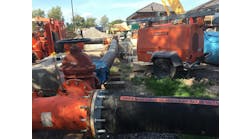Caterpillar posted sales and revenues of $9.881 billion in the third quarter of 2020 compared with $12.758 billion in the third quarter of 2019, a 22.6-percent decrease. The drop was primarily the result of lower sales volume, driven by lower end-user demand for equipment and services. Dealers decreased inventories more during the third quarter of 2020 than during the third quarter of 2019.
Third quarter 2020 profit per share was $1.22, compared with $2.66 in the third quarter of 2019. Operating profit margin was 10 percent for the third quarter of 2020, compared with 15.8 percent for the third quarter of 2019.
Sales were lower across all regions and the three primary segments. In Caterpillar’s Construction Industries’ segment, third quarter revenues were $4.056 billion, compared to $5.289 billion in the third quarter of 2019, a 23.3-percent slide. In Resource Industries, revenues dove from $2.310 billion a year ago to $1.816 million in the third quarter of this year, a 21.4-percent drop. Energy & Transportation’s decline was similar, from $5.452 billion a year ago to $4.161 billion, a 23.7-percent fall.
North America sales decreased 35 percent; Latin America 44 percent; Europe, Asia and Middle East dropped 24 percent. However, the Asia Pacific region increased 14 percent.
For the nine months ended September 30, 2020, enterprise operating cash flow was $4.3 billion. Caterpillar ended the third quarter with $9.3 billion of enterprise cash and more than $14 billion of available liquidity sources.
"I'm proud of our global team's performance as we continue to safely navigate the pandemic while remaining firmly committed to serving our customers," said Caterpillar Chairman and CEO Jim Umpleby. "Our third-quarter results largely aligned with our expectations, and we're encouraged by positive signs in certain industries and geographies. We're executing our strategy and are ready to respond quickly to changing market conditions."
In North America, sales decreased mostly due to lower sales volume driven by lower end-user demand and the impact from changes in dealer inventories. The lower end-user demand was driven primarily by pipeline and road construction. Sales declined in Latin America primarily because of the impact from changes in dealer inventories and unfavorable currency impacts from a weaker Brazilian real. In EAME, sales decreased mostly because of lower sales volume across the region, driven by lower end-user demand and the impact from changes in dealer inventories.
Sales increased in Asia/Pacific primarily due to the impact of changes in dealer inventories, partially offset by unfavorable price realization. The increase in sales was primarily driven by China demand, which was partially offset by lower sales in the rest of the region.






